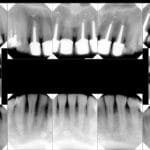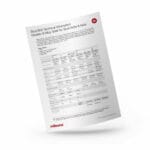Ever wondered about the shelf life of that kombucha bottle tucked away in your fridge? This guide explores the fascinating world of kombucha’s longevity, delving into the science behind fermentation, storage practices, and the telltale signs of spoilage. Understanding these factors empowers you to enjoy kombucha at its peak and avoid any unpleasant surprises.
Decoding Kombucha’s Shelf Life
Kombucha, unlike milk, doesn’t “expire” in the traditional sense. Its complex ecosystem of bacteria and yeast continues to evolve, gradually transforming its flavor and fizziness over time. Let’s unravel the mysteries of its shelf life.
Understanding the “Best By” Date
The “best by” date on your kombucha bottle isn’t an expiration date. Think of it more as a “best flavor by” date. It suggests when the kombucha is likely to be at its most flavorful, not when it suddenly becomes unsafe. After this date, the flavor may shift, becoming more tart or vinegary due to ongoing fermentation.
Shelf Life of Unopened Kombucha
Unopened, refrigerated kombucha can often last for several months, sometimes even beyond the “best by” date. The cool temperature slows fermentation, acting as a preservative. However, always inspect for mold – a definitive sign of spoilage – before consuming.
Shelf Life of Opened Kombucha
Once opened, kombucha’s environment changes. Exposure to air introduces new microorganisms and accelerates fermentation. For optimal taste and fizz, consume opened kombucha within a week. While it likely won’t be unsafe after a week, the flavor and carbonation may not be ideal.
Recognizing Spoiled Kombucha
While kombucha is resilient, it’s not invincible. Here are the key signs that your kombucha has gone bad:
- Mold: Any visible mold growth – fuzzy patches, discoloration – warrants immediate disposal.
- Foul Smell: Trust your nose. A sulfurous, rotten, or simply “off” smell indicates spoilage.
- Strange Texture: A slimy or stringy texture suggests something is amiss.
- Excessive Flatness: While some carbonation loss is normal over time and not always indicative of spoilage, an excessively flat kombucha suggests the brew is past its prime.
Factors Influencing Shelf Life
Several factors influence kombucha’s shelf life:
- Storage Temperature: Refrigeration is crucial. Cooler temperatures slow fermentation, preserving flavor and quality. Avoid storing kombucha in direct sunlight or warm areas.
- Packaging: Airtight bottles preserve freshness better than other packaging.
- Added Ingredients: Fruit juices and other additions can sometimes accelerate fermentation.
- Homebrewed vs. Store-Bought: Homebrewed kombucha, lacking pasteurization, typically has a shorter lifespan than store-bought (1-3 months unopened, 3-5 days opened vs. 6-8+ months unopened, up to 7 days opened). Maintaining stringent sanitation during home brewing is essential.
- Sediment: Don’t be alarmed by sediment in your kombucha, especially unfiltered varieties. It’s a natural byproduct of fermentation, not a sign of spoilage.
Is Expired Kombucha Safe to Drink?
So, you have a bottle of kombucha past its “best by” date. Is it still safe? Probably yes, thanks to the acidic environment created by fermentation, which inhibits harmful bacteria. However, before you imbibe, always check for the spoilage signs mentioned above.
The “best by” date pertains to optimal flavor, not safety. Over time, kombucha becomes more vinegary as fermentation continues. This doesn’t necessarily make it unsafe, but the taste might not be what you expect. Refrigeration slows this process, but it doesn’t stop it entirely.
Uncover the secrets of psychedelic shelf life and learn do shrooms expire.
Can You Drink 2-Year-Old Kombucha?
A two-year-old bottle of kombucha lurking in your fridge? It might be safe to drink if there’s no mold or foul smell, but expect a dramatically different flavor profile – likely extremely vinegary. The continuous fermentation process significantly alters the taste over such a long period.
While refrigeration slows fermentation, it doesn’t halt it completely. Over two years, even refrigerated kombucha undergoes substantial flavor transformation. Consider using overly vinegary kombucha in cooking – it can add a zing to salad dressings or marinades. Dive into the intricacies of drug testing and discover the telltale signs of suboxone use by exploring does suboxone show up in a urine drug test.
How Can You Tell if Kombucha Has Gone Bad?
The most reliable indicators of spoiled kombucha are:
- Visible Mold: Discard immediately.
- Foul Smell (sulfur, rotten eggs, etc.): Another clear sign of spoilage.
- Excessively Sour Taste: While not harmful, an extremely vinegary taste suggests over-fermentation and a less enjoyable drinking experience.
- SCOBY Formation: Don’t worry about the gel-like SCOBY (symbiotic culture of bacteria and yeast). It’s a natural and harmless byproduct of fermentation, not a sign of spoilage.
Trust your senses. If anything looks, smells, or tastes off, err on the side of caution and discard the kombucha. While this guide provides comprehensive information, research on kombucha and its shelf life is ongoing. Stay curious and informed about the latest findings.
- Decoding the F1BB Goldendoodle: Temperament, Coat, Health, and More - December 15, 2024
- G2 Gatorade Nutrition Facts: A Deep Dive into Calories, Electrolytes, and Ingredients - December 15, 2024
- InSinkErator Badger 5 Disposal: A Homeowner’s Guide to Quiet & Efficient Food Waste Disposal - December 15, 2024















